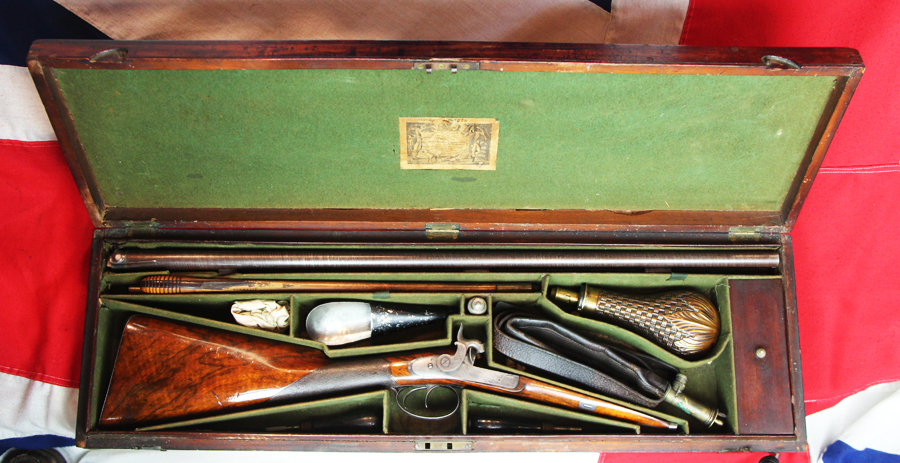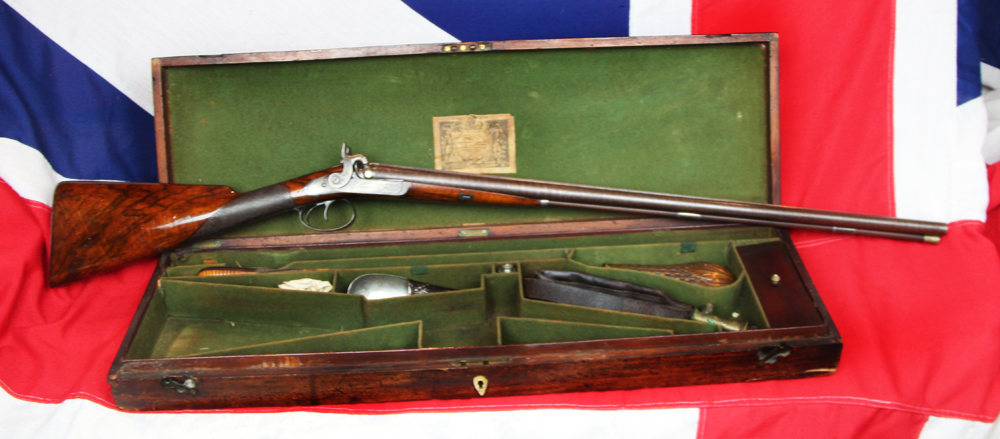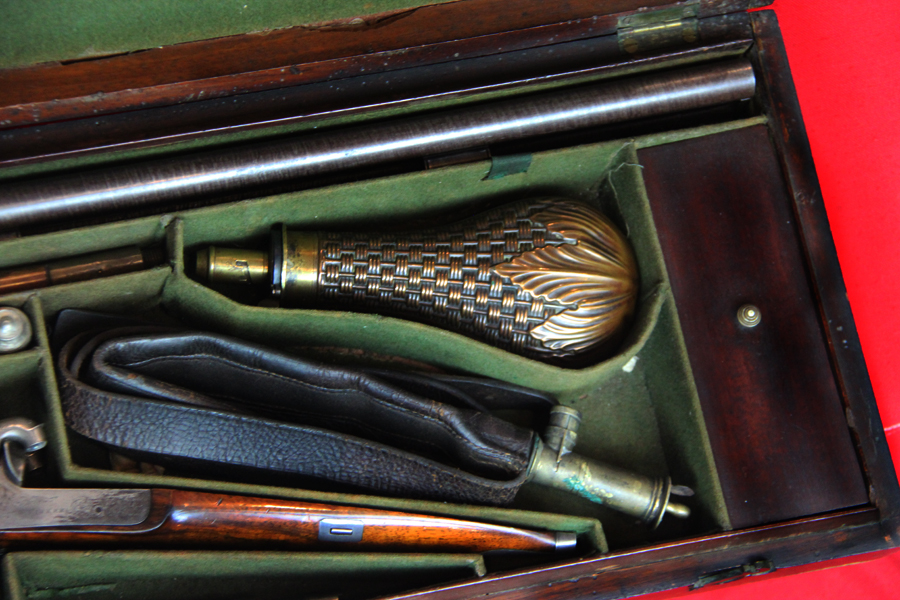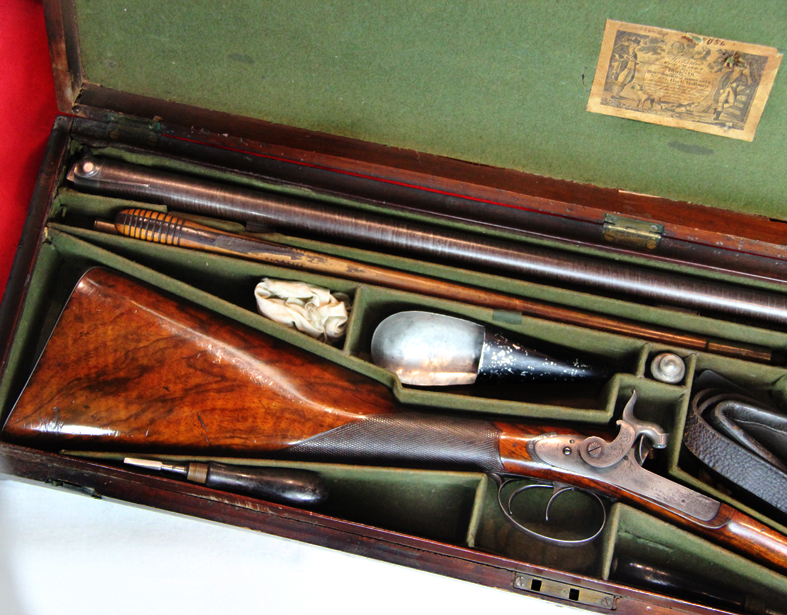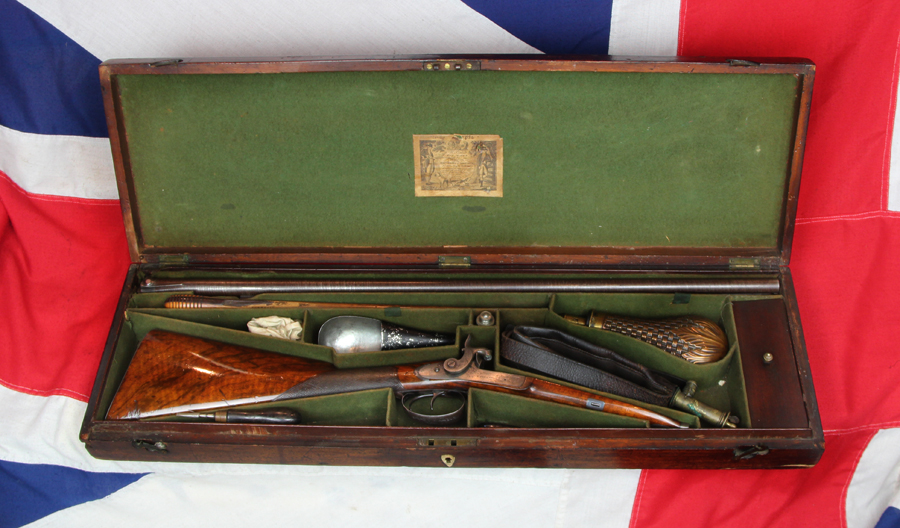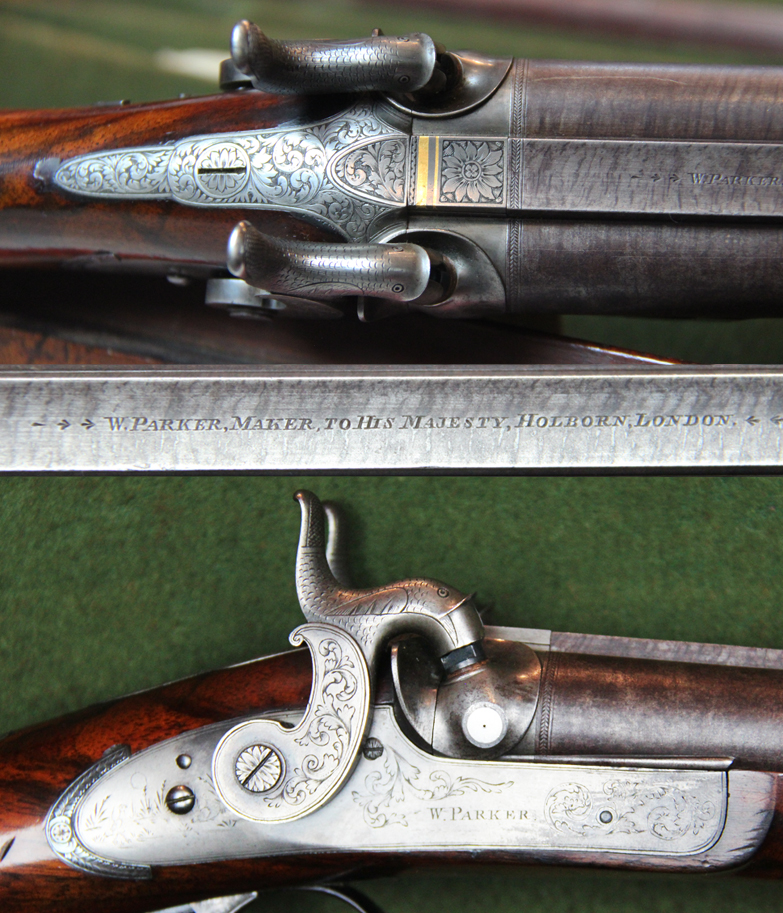A Simply Wondrous, And An Absolute Beauty of a Cased, Double Barrelled Percussion Sporting Gun, Tools, Powder Flask Cleaning Rod, Nipple Key, Ramrod With Multi Heads, Turnscrew Etc. Bespoke Made Circa 1835. Maker to The King. W Parker Master Gunsmith
A magnificent original set, that would cost today, to be bespoke custom hand made, in excess of £125,000. the hand engraving alone is simply breathtaking.
A finest, King William IVth period, original cased English double Damascus barrelled sporting gun by one of England's pre-eminent makers of the 19th century, William Parker of 233 High Holborn, gun maker to Prince Edward, to King William IV (1830-1837) and the Duke of Kent. The whole gun's mounts are hand engraved with superlative skill and expertise, it features, pheasants, a gun dog, dolphin hammers a stunning pineapple finial to the trigger guard and profuse scrolling arabesques. The stock is the finest Juglans Regia walnut and the mahogany case bears its original baize lining and maker label. It is fully fitted throughout with essential equipment and tools including a signed copper powder flask, a shoulder mounted bandolier type shot flask, a percussion cap tin, a gun fitted ram rod, and a separate case ram/cleaning rod, oil bottle, and a most rare shot-pouring funnel, nipple key and screw driver. To replace such a fine hand made gun today, likely only Purdey or Boss of London could have the skills required to replicate it. A fine engraved Purdey side by side, with a pair of Damas barrels, costs today £113,500, with an 18 months to 2 year waiting time, and additional costs for casing and tools. When John Field died in 1791, William Parker went into partnership with his widow (name not known), and they traded as Field & Parker. John Field had been a goldsmith, sword cutler and gun maker at 233 High Holborn from 1783 to 1791, trading under his own name and also as Field & Co and Field & Clarke (William Clarke of Duke Street, Portland Place). In 1793, William Parker bought John Field's widow's share of the partnership. From that date he ceased being a goldsmith. In 1803, on John Brown's bankruptcy, he appears to have bought the rights to Joseph Hall's "New Invented Hammer" patent (No. 2573 of 1802 - waterproof primer and steel)from John Brown, and he used George Dodd's 1805 patented lock. In 1803 he started to supply the London Police Offices with guns. In 1804 William Parker became a Contractor to Ordnance. In 1806 Parker opened additional workshops at 22 Chamber Street, these moved in 1808 to 52 & 31-32 Chamber Street.
In 1814 the firm rented additional production facilities at John Stinton's workshops in Glasshouse Yard. In about 1814 William Parker's daughter, Mary, married John Field Jnr. From 1820 to 1826 William was recorded at 60 Theobalds Road (workshop). In 1829 William Parker started to supply guns to the Metropolitan Police (London Police Offices re-named). At some time William Parker became gun maker to Prince Edward, then to King William IV (1830-1837) and the Duke of Kent. In 1833 William became a contractor to the East India Company, and in 1837 a contractor to the Hudson's Bay Company. The double-barrelled sporting gun was seen as a weapon of prestige and authority, especially in the days of the East India Company and the later Raj in India, where it was known as Dunali (literally "two pipes"). It was especially valued in Bihar, Purvanchal, Uttar Pradesh, Haryana and Punjab
In 1838 Ordnance contract ended and the firm moved their workshops to 10 Chamber Street. In 1841 William Parker died, aged 68, and John Field Jnr and his sons trading as Parker, Field & Sons took over. This fabulous gun is in overall excellent condition. As with all our antique guns, no license is required as they are all unrestricted antique collectables
Code: 22880
9995.00 GBP

